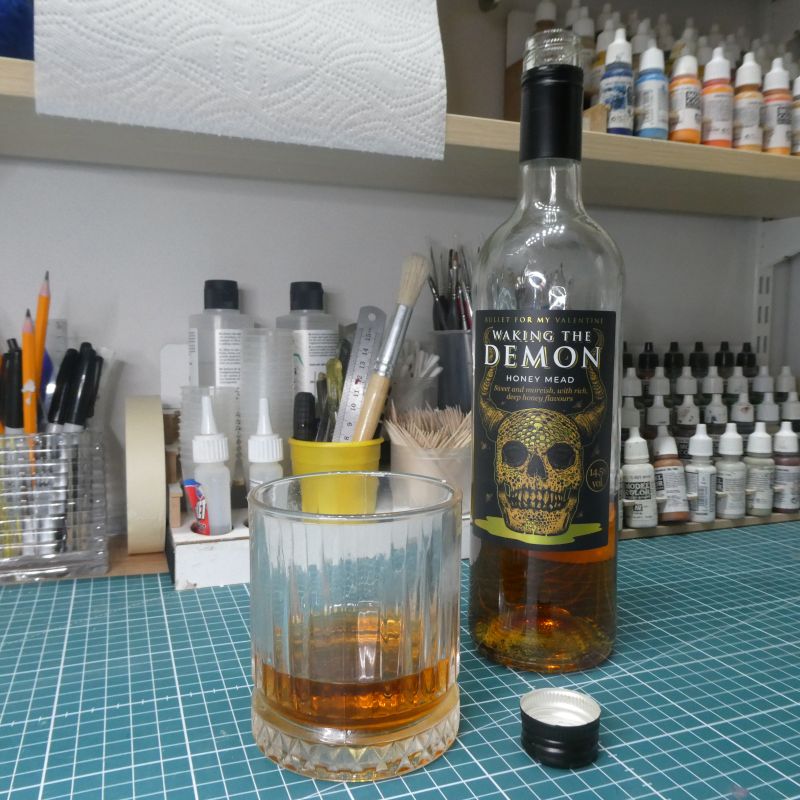- Welcome to N Gauge Forum.
Recent posts #51
General Discussion / Re: what are you listening to ...Last post by Firstone18 - Yesterday at 03:07:48 PMPlaying some of my Chris Rea albums; Blue Jukebox and Blue Cafe.
#52
N Gauge Discussion / Re: Problems with Graham Faris...Last post by ntpntpntp - Yesterday at 02:04:04 PMI've just worked through a deceased friend's collection of British N locos (Some had been stored unused for well over 10 years). Any that failed to run the first thing I did was remove the body, remove bogies (check for split gears) and apply power directly to the motor checking for signs of life. If none, I tried rotating the motor armature gently by hand at low power to see if that kicked into life and that all poles were live. I then removed and fettled the brushes and springs, cleaned the commutator and lightly lubricated the bearings.
No dead motors or over-worn brushes, but quite a few split 16 tooth and 12 tooth gears in the bogie diesels and electrics  #53
General Discussion / Re: MERRY CHRISTMAS, EVERYONELast post by Newportnobby - Yesterday at 01:12:25 PMQuote from: joe cassidy on Yesterday at 11:30:26 AMI only tasted mead once, in Russia of all places. It was OK, except for the bits of beeswax floating around in it. Free nibbles with every drink  #54
General Discussion / Re: MERRY CHRISTMAS, EVERYONELast post by Dorsetmike - Yesterday at 01:10:25 PMI get mine from Amazon these days, I used to get it from the makers Lyme bay wineries near Lyme Regis on our way to or from Cornwall holidays.
#55
N Gauge Discussion / Re: Problems with Graham Faris...Last post by Bob G - Yesterday at 11:38:19 AMQuote from: Bigmac on Yesterday at 11:04:01 AMif its totally dead when put on the track then whats the odds the tiny nut that holds the wire inside the loco has come loose or off. Good thought. the OP will see that when he takes the body off. I'd forgotten about their construction because it's been so long since I ever needed to get into one of these. Bob #56
General Discussion / Re: MERRY CHRISTMAS, EVERYONELast post by joe cassidy - Yesterday at 11:30:26 AMI only tasted mead once, in Russia of all places. It was OK, except for the bits of beeswax floating around in it.
Quote from: Phoenix on December 25, 2025, 11:19:41 PMNothing wrong with a drop of mead #57
General Discussion / Re: Ashes tour 25/26Last post by Newportnobby - Yesterday at 11:23:08 AMCarse at a length outside the off stump gets whacked through the covers for 4.
Next ball - repeat. Next ball - repeat. Why can't they learn?  #58
General Discussion / Re: what are you listening to ...Last post by Moonglum - Yesterday at 11:06:05 AMNothing like a bit of "Ghost Love Score" to brighten the day up!
#59
N Gauge Discussion / Re: Problems with Graham Faris...Last post by Bigmac - Yesterday at 11:04:01 AMif its totally dead when put on the track then whats the odds the tiny nut that holds the wire inside the loco has come loose or off.
#60
N Gauge Discussion / Re: Problems with Graham Faris...Last post by Roy L S - Yesterday at 10:56:30 AMQuote from: PLD on December 25, 2025, 11:42:58 PMSo they're both Chinese assembled versions of original Poole design Models so somewhere between 10 & 20 years old... It may not seem like it but Poole derived models made in China ceased production way more than 10 years ago, I think the first of the "new" breed of steam locos (beginning with the Jubilee) arrived 2007-ish, and what followed from that very quickly was the entire range of brand new tool steam locos, so I would say production of Poole derived steam locos ended more like 16-18 years ago. I had A3 "Merry Hampton" in the early "Noughties" and would think "Winston Churchill" was produced within a year or two of it, making both more like 20 years old (scary!). Roy | Please Support Us!
December Goal:
£120.00 Due Date: Dec 31 Total Receipts: £54.56 Below Goal: £65.44 Site Currency: GBP 45% December Donations |








